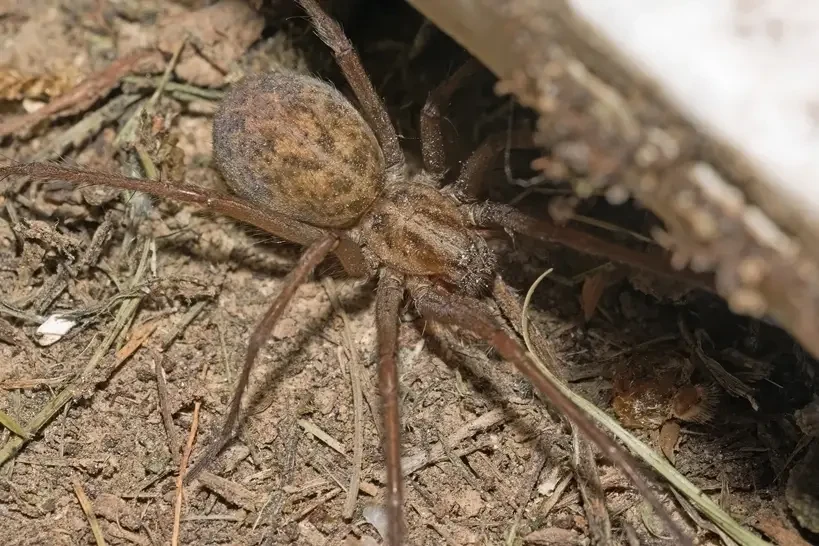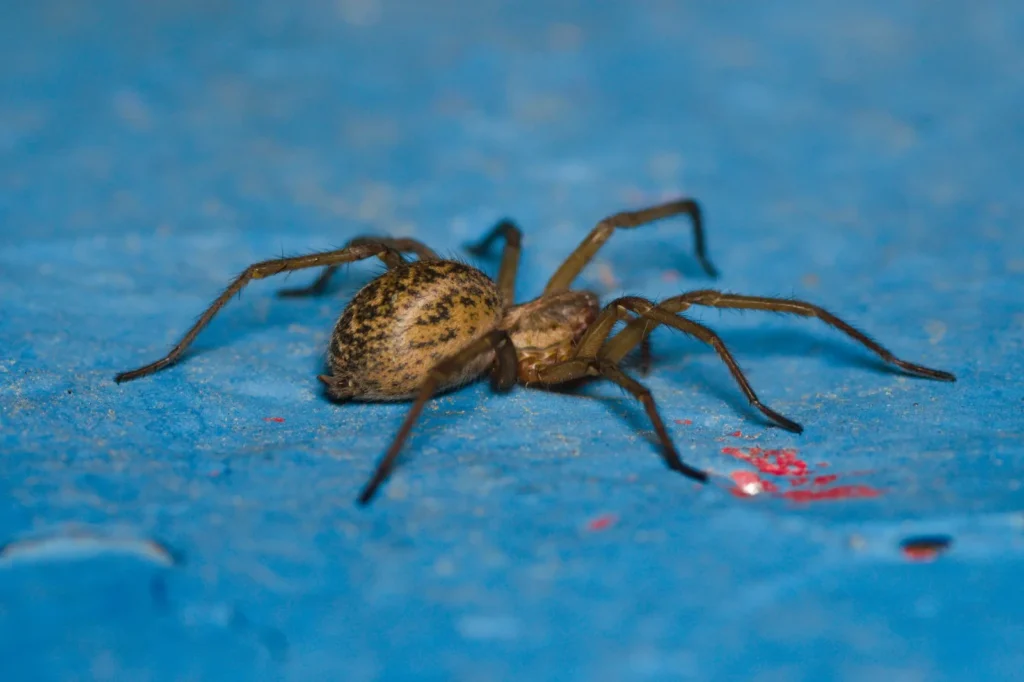Wandering spider, or brown recluse spider (Wild ants), is one of the most famous spiders of the funnel-web family (Agelenidae), which lives in Europe and North America. It is often confused with dangerous spiders such as Loxosceles reclusa (brown recluse spider), which has given rise to many myths about its venomousness.
📌 Why is this spider interesting?
✔ Builds a characteristic funnel-shaped web
✔ An active hunter who catches insects in his web
✔ Known for its speed and timidity
✔ Its bite was previously thought to be necrotic, but modern research refutes this.
Let's find out if this spider is really dangerous, where you can find it, and what its features are!

Scientific classification
✔ The Kingdom: Animals (Animalia)
✔ Type: Arthropods (Arthropoda)
✔ Class: Arachnids (Arachnida)
✔ Row: Pavuk (Araneae)
✔ Family: Voronkoplet spiders (Agelenidae)
✔ Gender: The origin
✔ View: Wild ants
📌 This spider was previously classified in the genus Tegenaria, but after research it was transferred to Eratigena.*
Appearance
🕷 What does a wandering spider look like?
✔ Body size:
• Females: 11–16 mm
• Males: 7-13 mm
✔ Paw span: up to 5 cm
✔ Colour: brownish-brown with dark spots on the abdomen
✔ Body: covered with small hairs
✔ Paws: long and thin, without characteristic rings
✔ Oko: 8 eyes arranged in two rows
📌 The main difference from other funnel-web spiders is a more uniform brown color.

Distribution area and habitat
🌍 Where does the wandering spider live?
✔ Europe: from Great Britain to Ukraine
✔ North America: USA, Canada (introduced species)
✔ Living environment:
• Forests and fields
• Old buildings, sheds, basements
• Roadsides and parks
📌 This spider avoids human dwellings, unlike Eratigena atrica (the large house spider).
Lifestyle and behavior
🌿 How does a wandering spider behave?
✔ Builds a funnel-shaped web
✔ Does not weave traditional fishing nets
✔ Hunts actively – waits for prey and attacks with lightning speed
✔ Avoids people and light
📌 This spider is mostly nocturnal and quite shy.
Features of the web
🕸 How does a wandering spider use its web?
✔ Builds a small but dense funnel-shaped web
✔ A victim touching the web is instantly attacked by the spider.
✔ Has a separate “escape” chamber in its nest
📌 If a spider senses danger, it runs away rather than trying to defend itself.

Food
🍽 What does a wandering spider eat?
✔ Flies, mosquitoes, butterflies, small spiders and other insects
✔ Sometimes attacks small arachnids and woodlice
✔ Does not prey on humans or pets
📌 This spider benefits by destroying insect pests!
Reproduction
❤️ How do wandering spiders reproduce?
✔ Males actively seek out females during the warmer months.
✔ The female lays eggs in a silk cocoon.
✔ Young spiders hatch after a few weeks and spread quickly.
✔ Lifespan – up to 2 years
📌 After mating, males usually die.
Is it dangerous for humans?
🚨 Does the wandering spider bite people?
✔ Yes, but rarely – only when threatened
✔ The bite may cause a mild allergic reaction
✔ The venom is not necrotic – modern research has confirmed this
📌 It was previously believed that this spider could cause tissue necrosis, but scientific studies have shown that its venom is not that dangerous.

Interesting facts
💡 It was called a "wanderer" because it often migrates in search of food.
💡 It is often confused with the dangerous hermit spider, but this is a mistake.
💡 European populations are less aggressive than American ones
💡 Its venom was studied by NASA during space experiments.
How to avoid meeting a spider?
🛑 If you don't want to see spiders in your home, follow these simple rules:
✔ Keep the room clean.
✔ Seal cracks and holes in walls
✔ Do not leave lights on, which attract insects (food for spiders)
✔ Use natural repellents – mint, eucalyptus, citrus oils
📌 But remember – these spiders do not attack people and help fight insect pests!
Conclusion
🕷 The wandering spider (Eratigena agrestis) is not a bloodthirsty monster, but a beneficial hunter that helps reduce the insect population!
🌿 If you encounter it in your home, don't panic - just carefully take it outside.
📌 It is not dangerous to humans and avoids contact with people, preferring quiet places!